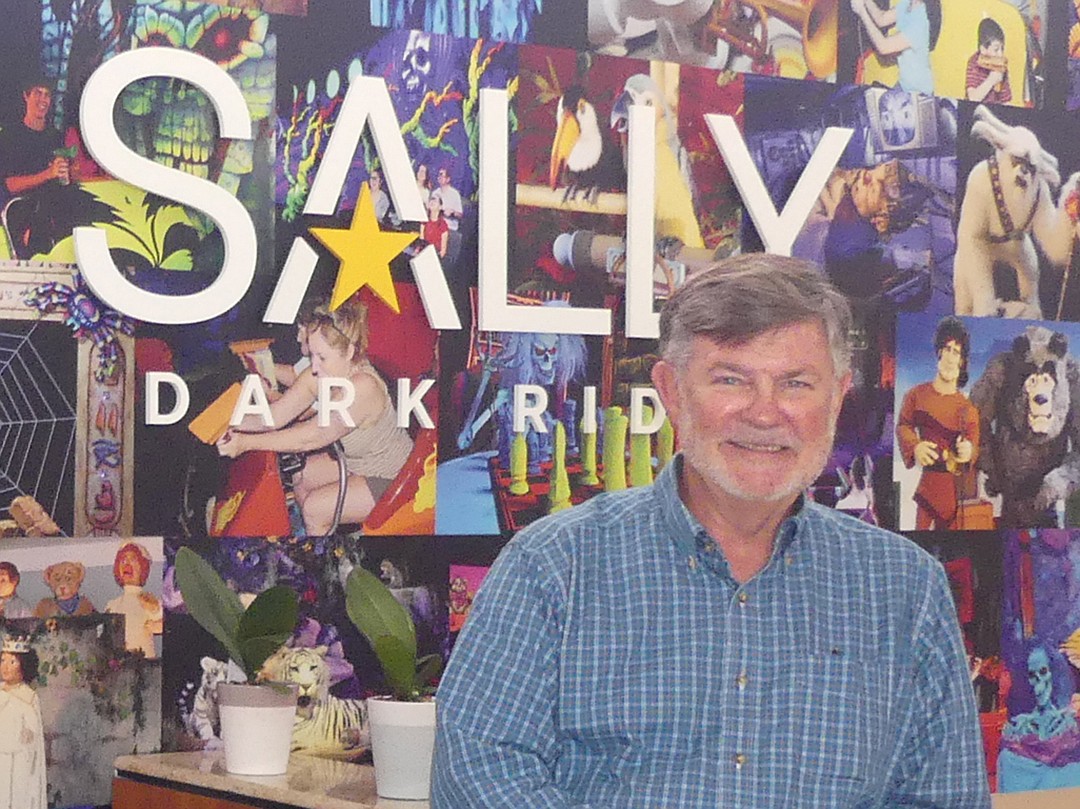
John Wood helped cut the ribbon March 1 at the Circus Circus Hotel & Casino in Las Vegas to open “SpongeBob’s Crazy Carnival Ride,” the latest animated interactive attraction his company, Sally Dark Rides, designed, built and installed.
The company started in Jacksonville in 1977. Since then, Sally has installed hundreds of animatronic characters and nearly 80 dark rides at dozens of theme parks and other large-scale attractions.
More than 40 people work in the administrative, creative, marketing and fabrication departments at the company’s headquarters at 745 W. Forsyth St. Downtown.
A talking head in a box
After graduating from The Bolles School and then Wake Forest University, Wood, 71, returned home to Jacksonville in 1974 to find his career.
A history major in college, he didn’t follow in his father’s footsteps and join the family business – Wood Lanier Opticians.
Instead, Wood took a job in the real estate investment trust department of The Charter Co.
Three years later, interest rates rose to 20%, business dried up and Charter had to cut expenses.
“The company shrank and I lost my job. I thought I wanted to stay in real estate and was looking to get my broker’s license,” Wood said.
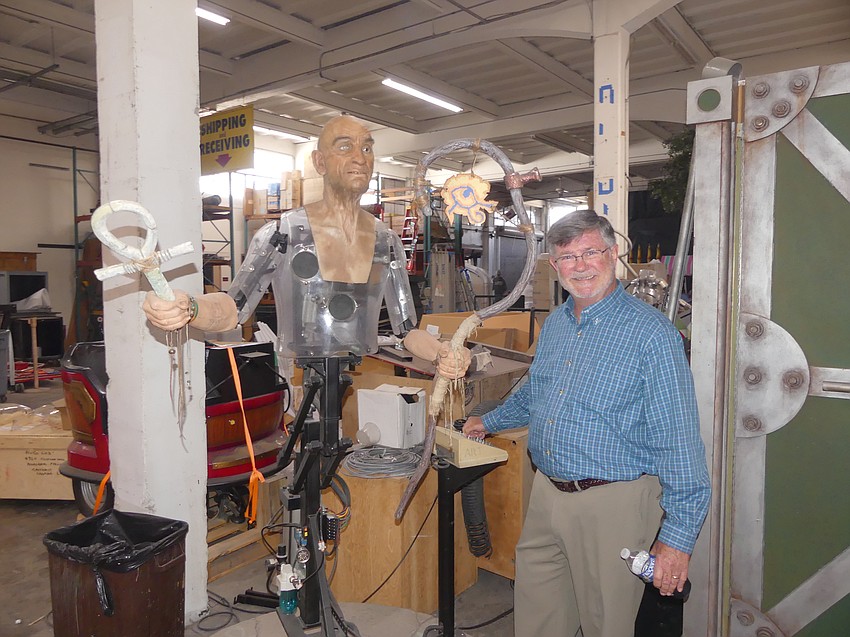
He knew John Fox, who was building homes and on the side working with his neighbor and high school friend, John Rob Holland, on a company based on a small robot Holland built while he was in dental school.
An animated head in a box, the first “Sally” was placed on a table in a dental office waiting room to draw the attention of children and teach them good dental health habits while they waited for their appointment.
With Fox’s advice, Wood went to meet Holland and saw four prototype life-size robots in the dentist’s garage.
“I was young and dumb and I had a little money saved and a lot of confidence. There may have been some beers involved and I agreed to become a partner,” Wood said.
“I decided to roll the dice and the adventure began.”
The company, named “Sally Unlimited” after the first product, opened in a small space at Roosevelt Boulevard and Plymouth Street.
With the operation growing, a year later Sally moved to a building on Bishop Gate Lane near Riverside Avenue and then to a building on Forest Street.
“We initially thought the product would be great for the retail display market. There was a lot of window dressing in those days,” Wood said.
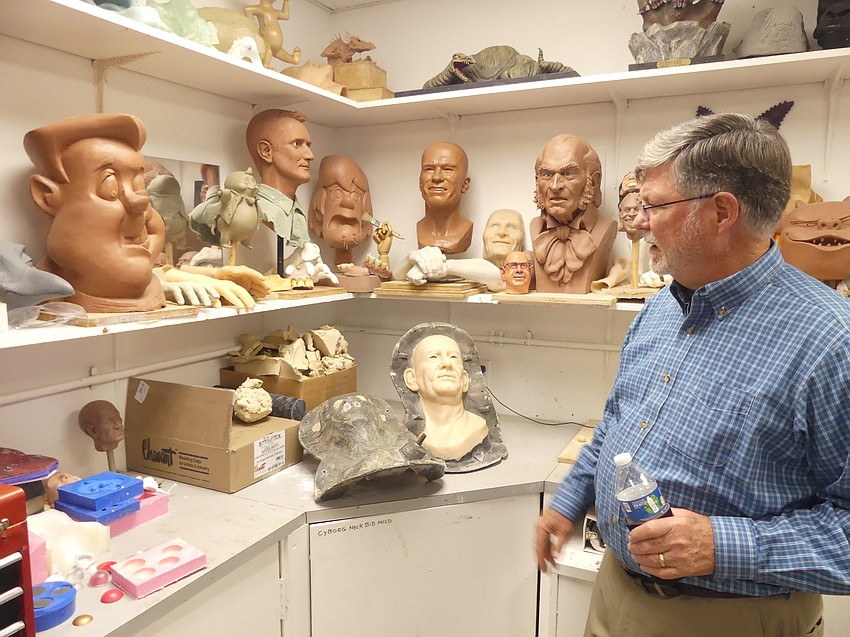
“We went to display trade shows in New York City, but we didn’t have a lot of success until we put an animated Santa Claus in our booth.”
Wood traveled to tourist attractions from St. Augustine to Miami, looking for potential customers for Sally’s robots.
“We sold a character to Kennedy Space Center, where I met a fellow who was a former Six Flags guy. He told me about the International Association of Amusement Parks and Attractions. That is our industry and they understand what we do,” Wood said.
“We went to our first IAAPA show in 1978 and we found a home.”
In 1983 when Fox left the company to return to building homes, the name changed to “Sally Industries.”
Holland left the company in 1987 to return to full-time practice, then the name changed again in 1992 when it became “Sally Corporation.”
Wood began doing business as “Sally Dark Rides” in 2019.
Over the years, the company and its products have had three lives, Wood said.
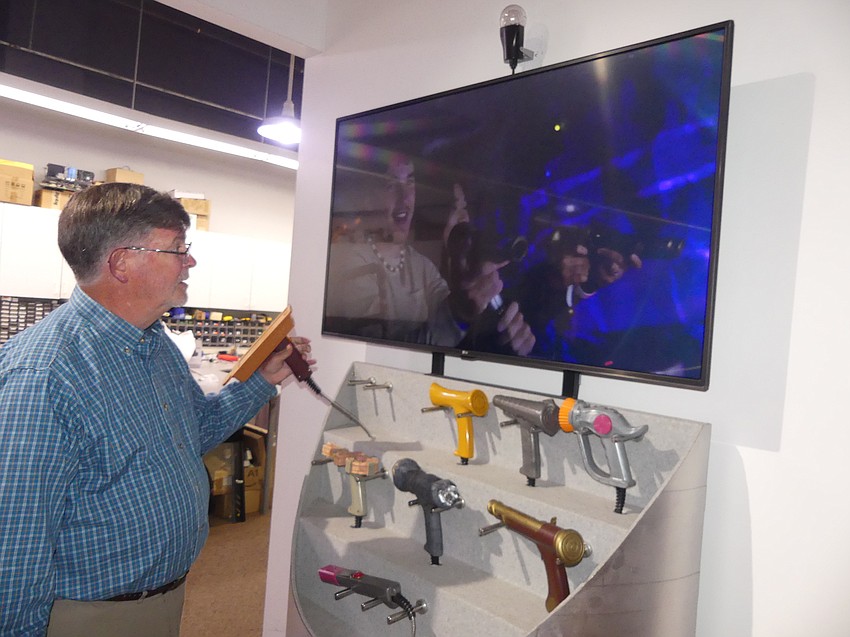
At first, the company built novelty robots, like the tooth fairy. That evolved into Sally the robot piano player that was sold to bars and hotels and a line of individual characters like Buster Brown for shoe stores and the Keebler Elf.
“The next evolution was a multi-character show that we did for the Chuck E. Cheese restaurants starting in 1982. There were 10 robots on three stages with lights and sound synchronized to music. It was a $100,000 show,” Wood said.
Variations included “Daniel and the Dixie Diggers” and “Bubba and the Badlands Band.”
Then, like what happened with Charter, a business downturn changed the direction for Wood and the company when Chuck E. Cheese filed for Chapter 11 bankruptcy in 1984.
After several years attending the IAAPA trade shows and becoming known as a dependable innovator in the industry, Sally landed a new contract that would take the company in a new direction.
“It was for a project Six Flags was doing at the Baltimore Power Plant attraction. We had to develop a programming system for 72 animatronic figures on five rotating stages. It was complex,” Wood said.
That challenge led to Sally evolving into its current business model as a designer and builder of “dark rides.”
Wood said the format has been around for more than a century. Some of the early versions were the “Tunnel of Love” attractions.
“You’d get in a little boat and float down a ditch in a dark tunnel. They were as popular as roller coasters,” Wood said.
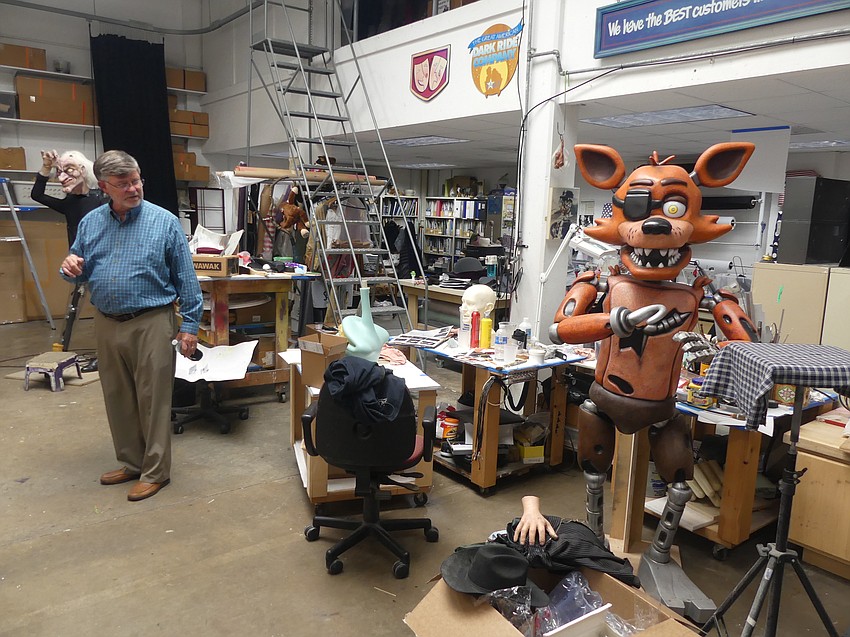
A dark ride is a multifaceted product combining several technologies, including animatronics, cars with tracks for riders, scenery and special effects, Wood said.
What Sally added to the equation is an interactive element that makes the ride more economically appealing to attraction owners and operators.
“On our rides, you shoot targets and that makes our rides repeatable. Regional parks rely on people visiting multiple times,” he said.
One of Sally’s first concept dark rides was based on the “Ghostbusters” motion picture.
Wood said the company invested about $4 million to build it, but he couldn’t find a buyer.
Fortunately, the international market for theme parks and rides was in a growth phase and Sally began developing a list that today includes clients on every continent except Africa and Antarctica.
The first industry recognition for Sally came in 1995 when “The Great Pistolero Roundup” received the Best New Product award at the annual IAAPA convention.
The company built a “Ghost Blasters” dark ride for Mall of America in Minnesota. That success led to an agreement with Paramount Pictures to create a ride based on one of their franchises.
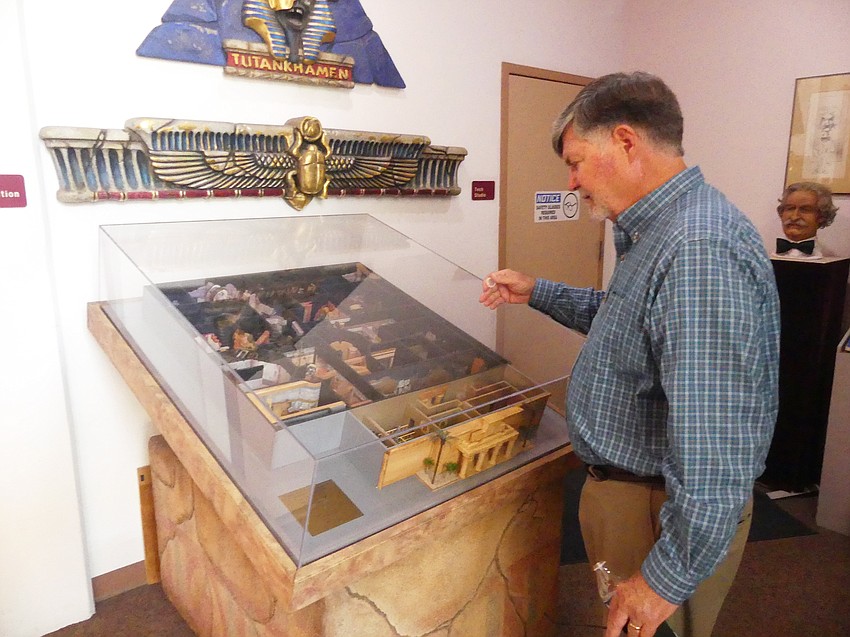
“We built seven Scooby-Doo rides. By that time, we were well-known in the industry and I was convinced that we could produce a ride for the regional park market that would compete with a roller coaster,” Wood said.
In 1994, Wood moved the company into its 35,000-square-foot headquarters in the LaVilla neighborhood Downtown.
“Scooby-Doo’s Haunted Mansion” was Sally’s second Best New Product award winner and its first Best New Children’s Ride winner in 1999.
The next milestone year was 2002 when “Challenge of Tutankhamon” won the Best Major Ride, Best Innovation, Best Dark Ride in Europe, Best Family Ride in Europe and the THEA Outstanding Achievement awards at IAAPA.
Built for a theme park in Belgium owned at the time by the Six Flags organization, it was Sally’s first 20,000-square-foot ride and cost $7 million.
“I was so convinced that everyone was going to want that ride that I basically gambled the company,” Wood said.
They built a $200,000 booth that was a miniature version of the ride and took it to the next trade show.
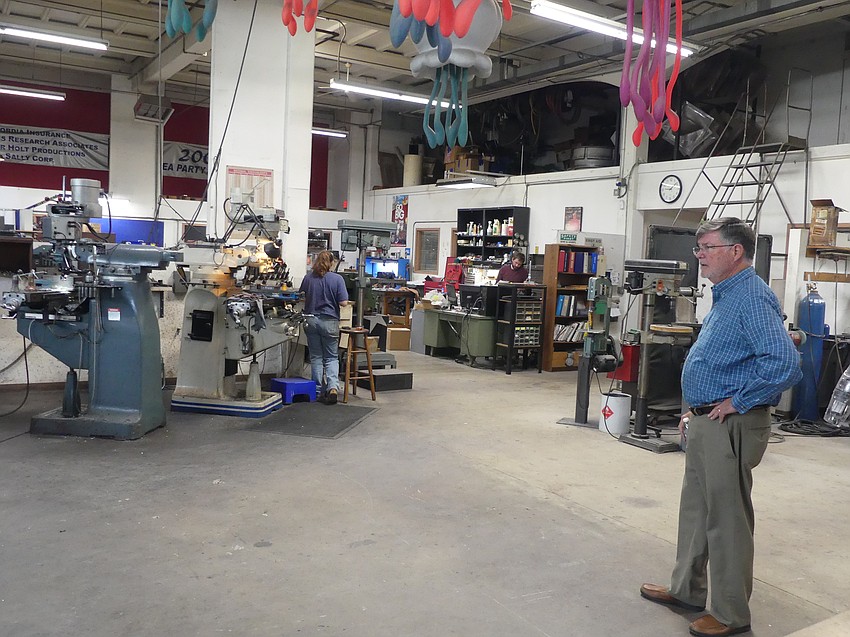
But the 9/11 terror attack had so negatively affected the tourist attraction industry that the investment did not return results.
“Right about the time the bank was telling us that we had better get something going, we got a Scooby-Doo project in Europe,” Wood said.
Then came a new Spider-Man ride and another project for DC Comics – “Justice League: Battle for Metropolis.”
“In three years, we built seven of them at $10 million each,” Wood said.
In the following years, Sally gained more clients to build a list that includes cities throughout North America, South America, Europe, Asia, Australia, the Middle East and Scandinavia.
In 2013, Wood was inducted into the IAAPA Hall of Fame in recognition of his and his company’s role in reviving the family dark ride market worldwide.
“We are the only turnkey provider from concept to installation and operation,” he said.
Dealing with a pandemic
The next challenge for Sally came when the pandemic shut down the entertainment facilities that Sally’s customers depend on for income for more than a year.

“COVID was a surprise that slapped us in the face. We had a big project in China. That was a bust. We ended up losing more than $1 million on that project and we lost two other $20 million projects - and what we were planning on doing for the next couple years,” Wood said.
The company survived with the help of the federal Paycheck Protection Program. The global market is coming back to life and Sally is working on new projects, Wood said.
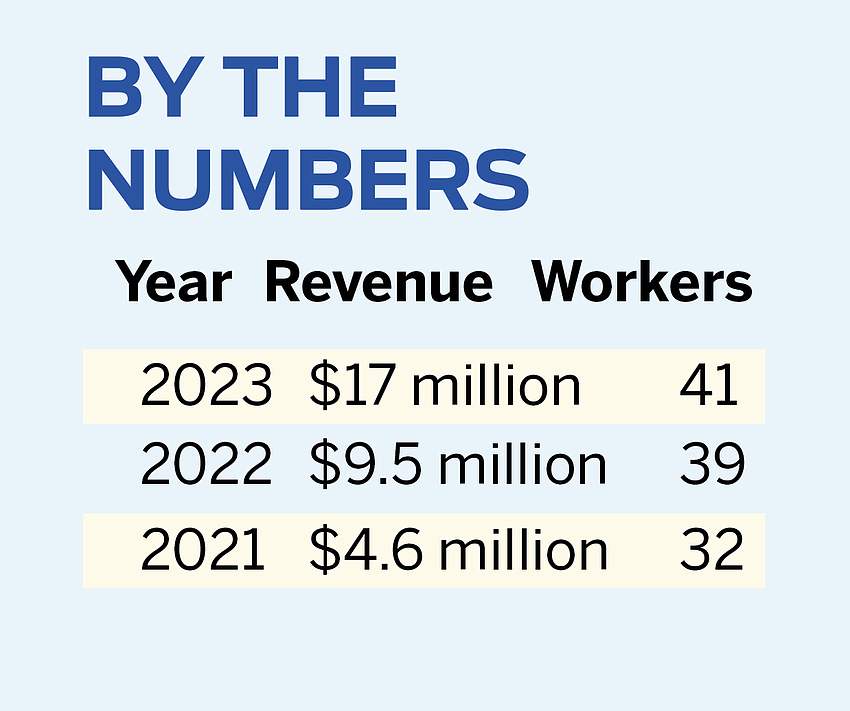
Later this year, the Sally team will install a new SpongeBob-themed ride at Land of Legends Theme Park in Turkey.
“I think we will sell a lot of them. We always try to build something we can sell to multiple customers,” Wood said.
Planning Sally’s future
Just before the coronavirus shutdown, Wood decided it was time to start thinking about taking a step back from day-to-day operations.
He recruited Rolf Paegert to become Sally’s CEO in 2020, based on his experience managing global theme park operations at SeaWorld and with Parques Reunidos’ United States division, which involved the strategic planning and operations of 22 theme parks.
“Rolf understands the market and the customers. He’s 18 years younger than I am and he has committed to being here for the next 10 years at least,” Wood said.
He said his goal for the company has not changed since he helped start it in 1977.
“I think dark rides are here to stay. They have been around for 100 years and they will be around for another 100 years. My goal is for Sally to be the first name in dark rides.”